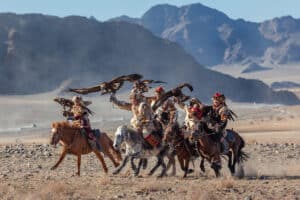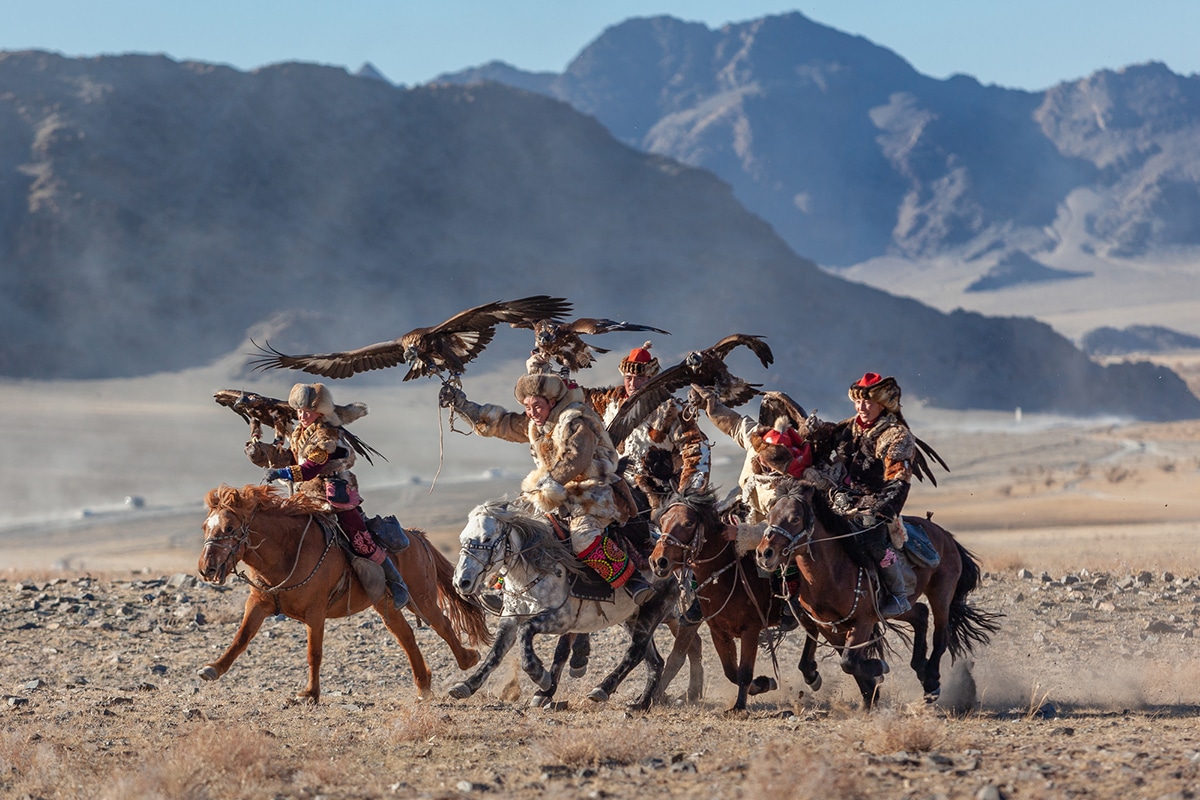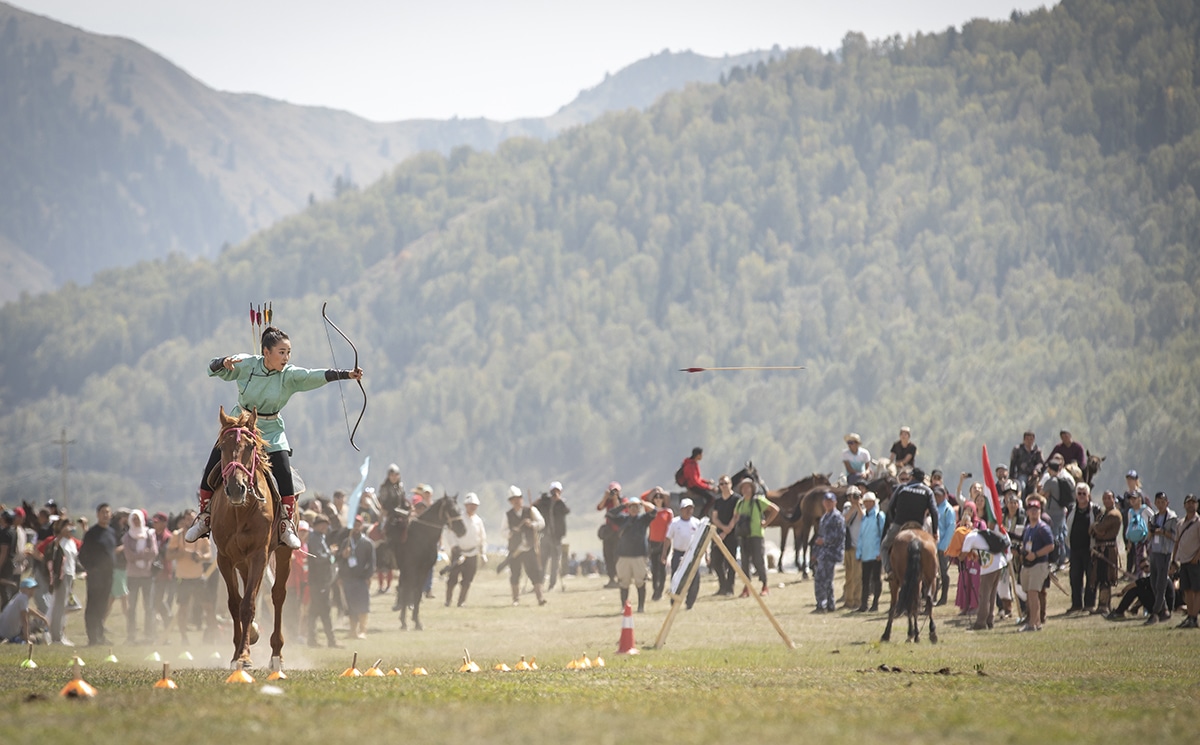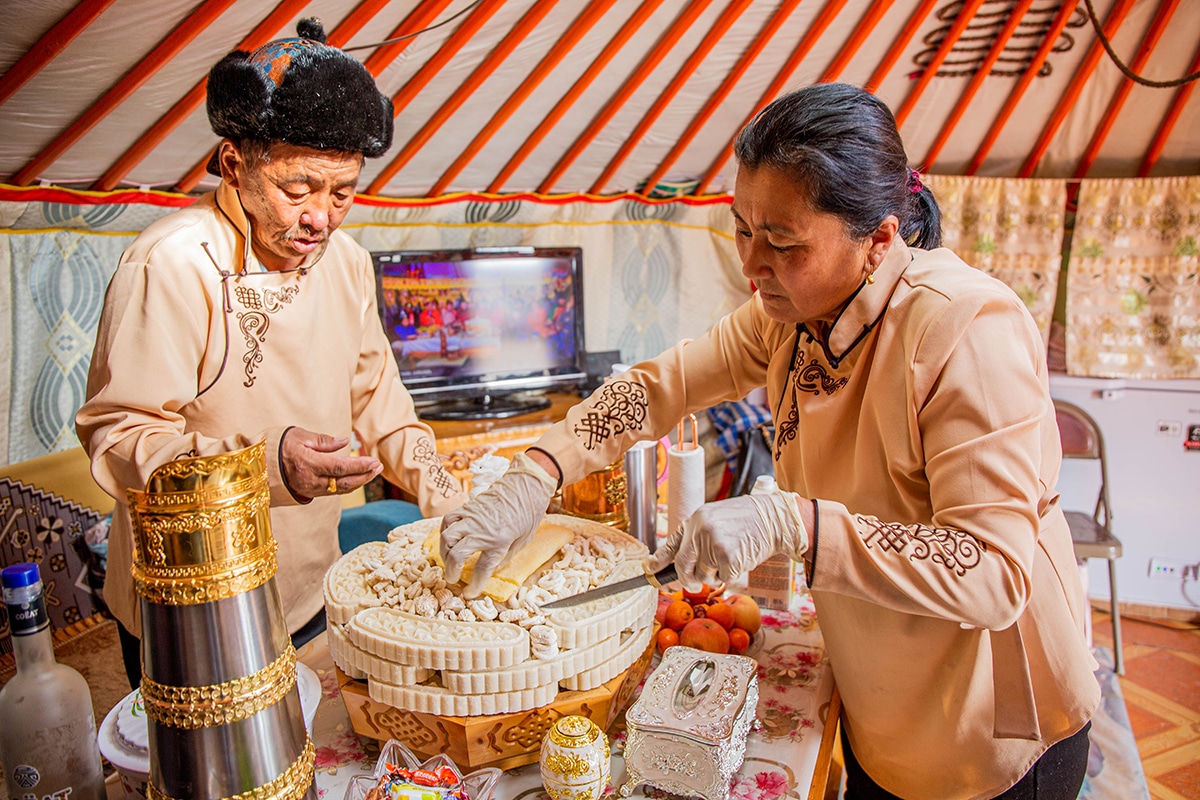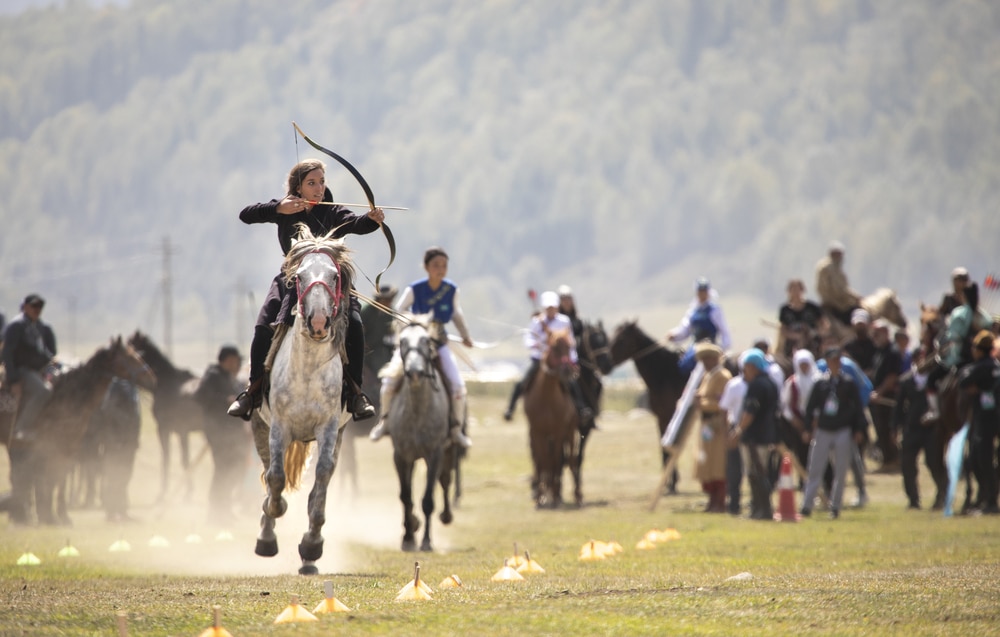The Best Museums in Ulaanbaatar: A Complete Guide
The best museums in Ulaanbaatar, from the newly opened Chinggis Khaan Museum to old favorites like the National Museum of Mongolia, and everything you need to know about visiting each.
- November 17, 2022
Table of Contents
When most people begin planning a trip to Mongolia, their reasons for booking aren’t necessarily because they want to experience Ulaanbaatar’s museum scene. Usually it’s for reasons much more epic, like riding a camel across the Mini Gobi or because they want to attend the national festival, Naadam.
Which are both fair reasons to get here.
However, most people make one huge mistake from the start of their Mongolia trip planning, and that’s that they don’t dedicate enough time for getting to know Ulaanbaatar, the country’s often misunderstood capital city.
We’re the first to admit that at first sight Ulaanbaatar isn’t much of a looker. But what the city lacks in looks, she makes up for in heart, and more importantly, soul. It’s what’s found in Ulaanbaatar that builds the foundation for any visit throughout the rest of the country, no matter what your Mongolia travel plans are.
A dinosaur museum with some of the country’s most famous finds that will help you understand the significance of this part of the world to the field of archeology? Sign us up. A larger than life Chinggis Khaan portrait made from cashmere in a shiny new museum dedicated to demystifying the legends around the country’s most famous warrior? Say no more. A Soviet-style off-the-beaten-path military museum where tourists and locals can see tanks up close, learn about the country’s fight for independence, and see other military memorabilia? Color us intrigued.
So, while stopping at Ulaanbaatar’s best museums might not have been a part of your original plan, go ahead and take the time to include at least one or two in your Mongolia itinerary. Here’s why – plus, a few things to know about what you’ll find in Ulaanbaatar’s museums and what Mongol zurag art is.

What will you find in Ulaanbaatar’s museums?
- Chinggis Khaan and the Silk Road
- Dinosaur Fossils
- Mongolian Buddhism
- Soviet Memorabilia
Let’s start with the obvious things you’ll find in the museums in Ulaanbaatar: artifacts, artifacts, and more artifacts from the days of Chinggis Khaan and the Silk Road. There’s no point in denying that’s the reason why many people head here, and where their knowledge of Mongolia and the Mongolian people begins and ends. Visiting Ulaanbaatar’s museums is a great way to expand on that knowledge.
Inside the museums you’ll find everything from artifacts and replicas dating back to the days of the country’s most famous khan to archeological discoveries that give incredible insight into what life here has been like through the millennia. From the tradition deels (traditional Mongolian robes) Mongols have worn through the centuries to the weapons and war tactics that helped them take over more than 1/3 of the world, it’s all here.
Dating back even further than that, and the second thing Mongolia is most famous for, are the dinosaur fossils that have been discovered here, especially over the last century. Did you know that some of the world’s most intact skeletons and egg nests are credited with being found in the Gobi Desert at the Flaming Cliffs? You can visit the sites where these discoveries made, and make discoveries of your own, even today.
Mongolia’s landscape is incredibly rich with dinosaur fossils, and it was during Roy Chapman Andrew’s first expedition to the Gobi Desert where the world’s first dinosaur eggs were discovered 100 years ago in 1922. It was during that same expedition that Andrews brought the first motorized vehicles to the country and where the stories for many of his books began.
Moving away from the natural wonders and towards the mystical wonders, it was the country’s acceptance of Buddhism in the 13th century (and again in the 16th century) and the sacred relics, temples turned museums, and beautiful Thangka paintings that adorn many museum walls today. Through many of these stories, relics, paintings, and sculptures you can understand a key part of the Mongolian people’s identity, and why Mongolian Buddhism is a central part of society in the present day.
Nevertheless, peace doesn’t come without its price and in 1921 Mongolia become the world’s second Communist state as the Mongolian Soviet Socialist Republic (Mongolian SSR). Through Soviet memorabilia, weaponry, and architecture you don’t need to necessarily go to Ulaanbaatar’s museums to feel this part of the country’s history, but doing so will certainly help you understand it.
Mongol Zurag + Famous Mongolian Artists
In addition to artifacts, fossils, sacred relics, and just about everything else you can imagine, Mongol zurag art is an important part of Mongolian culture that’s preserved in the country’s best museums.
What is Mongol zurag art?
In the early 20th century, the style of painting that’s today known as Mongol zurag emerged. In this style, secular, nationalist themes are depicted using mineral paints on cotton, similar to Tibetan thangka paintings.
This style is most famous in the One Day in Mongolia painting done by Balduugiin Sharav. The painting came after the 1921 revolution and is one of the most celebrated works of Mongolian art.
Zurag paintings are recognizable thanks to the scenes they depict of everyday life. From farms to traditional pastoral nomadic settings, another famous zurag painting is Ürjingiin Yadamsüren’s The Old Fiddler.
Many Mongolian artists carry on the tradition of painting in this style, which is still as popular – and recognizable – as ever.
Who are Mongolia’s most famous artists?
- Balduugiin Sharav
- Ürjingiin Yadamsüren
Balduugiin Sharav
Often considered Mongolia’s most famous painter, Sharav, also known as Sharav Balduu is most well-known for bringing a modern style of painting to Mongolia. Born in 1869, he was the first painter in the country to deal with modern subjects. His most famous work, One Day in Mongolia (Mongolyn neg ödör, in Mongolian language), is is meant to depict all the important details of a person’s life, from birth to death. His paintings typically cover large canvases, and his work can be seen at the Zanabazar Museum of Fine Arts in Ulaanbaatar.
Ürjingiin Yadamsüren
Born in 1905, Yadamsüren is the artist most famous for popularizing the Mongol zurag style of painting. Having studied in Moscow, he then worked for the Mongolian People’s Revolutionary Party’s Central Committee for a year before turning to painting. Using techniques he had learned in Moscow, he developed a socialist realist style of painting, and his oil paintings often depicted events in the early history of the Mongolian People’s Republic, which was then part of the USSR.
Later in his career, Yadamsüren began moving towards painting scenes from everyday nomadic life, which quickly became known as Mongol zurag. His 1958 work, The Old Fiddler, a painting depicting an old man holding a morin khuur (horse-head fiddle), is credited with bringing the style to a national audience and remains as his most famous work. The Old Fiddler can be seen in the Mongolian National Modern Gallery in Ulaanbaatar.
The 9 Best Museums in Ulaanbaatar
The 9 Best Museums in Ulaanbaatar
The Chinggis Khaan Museum
As the newest museum to open in the city, the Chinggis Khaan Museum can easily be considered Ulaanbaatar’s best museum.
There are a few to things to know before you visit the Chinggis Khaan Museum. First, the museum is as popular today as it was when it first opened. That means lines. Especially if you go late in the morning or early in the afternoon when it’s prime museum-going time. Our suggestion is to go early, the museum opens at 9:00 am, and with more than 11,000 artifacts, you can easily spend an entire day here anyways.
It is important to note that if you’d like to see each display’s description in a language other than Mongolian, you’ll need to scan a QR code that requires you have a phone that’s (1.) capable of doing so, and (2.) has an internet connection.
You can see more details about the current exhibitions, opening hours, and ticket prices on the Chinggis Khaan Museum website.

The National Museum of Mongolia
Across the road from the Chinggis Khaan Musuem and next to the Parliament Building, the National Museum of Mongolia covers everything from ancient Mongolian traditions to the country’s revolutions, protests, and desire for independence in the 90s.
While all the exhibitions here are well-curated and nicely presented, it was the traditional Mongolian deels displayed at the beginning of the museum that are most worth visiting this museum for.
From the traditional deels, paraphernalia, and shaman costumes on display, to the ger recreations, ancient tools, and paintings, the National Museum of Mongolia covers everything you need to know about Mongolia in a beautiful and easy-to-understand way.
Head here to avoid the crowds and learn just as much (if not more) about Mongolian history – the exhibit descriptions are in English.
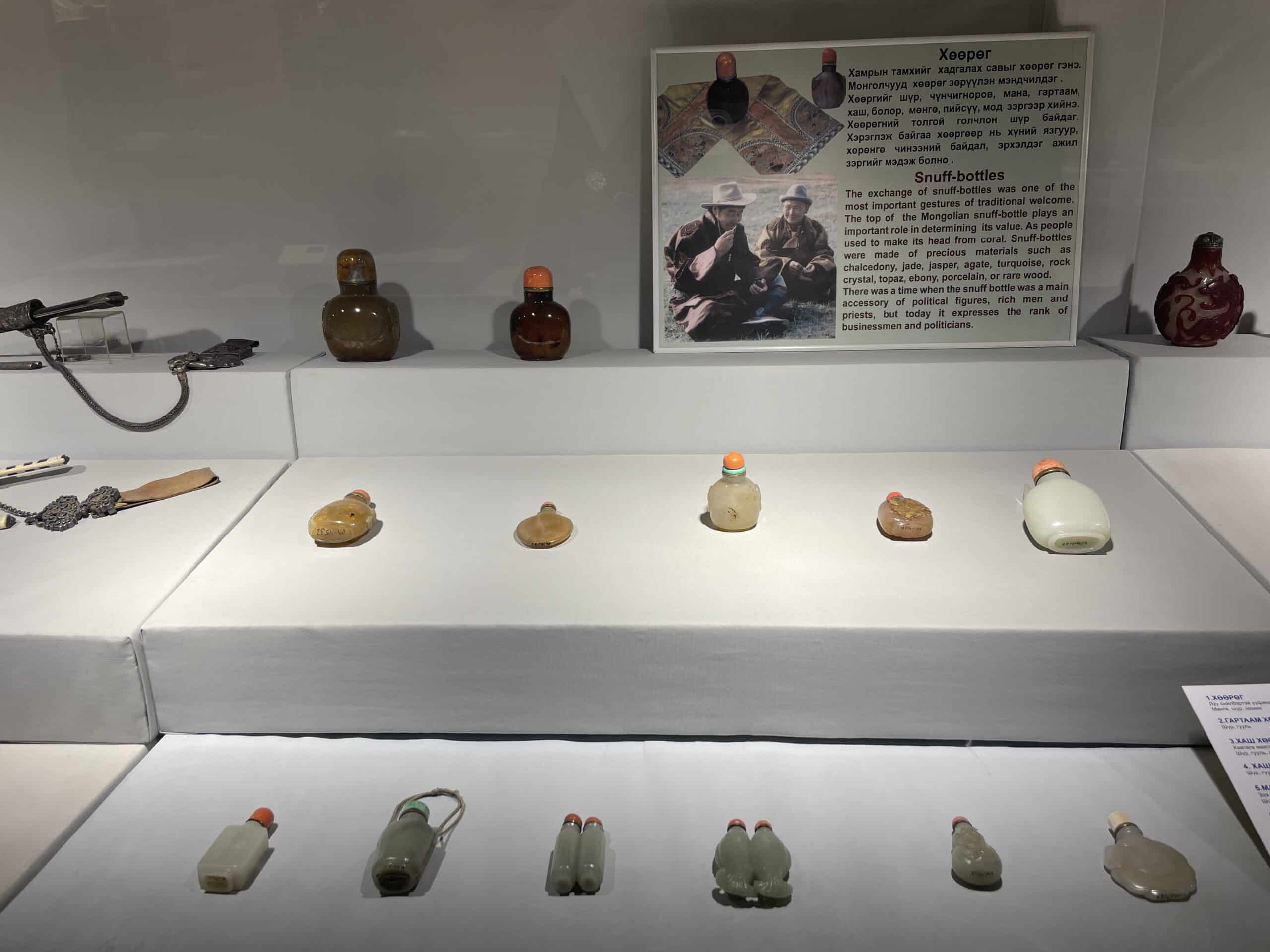
The Central Dinosaur Museum
Quirky and weird, the Central Dinosaur Museum is a fun museum to stop into when you’re visiting Ulaanbaatar. Located in the city center in the former Lenin Museum, and now merged with the Natural History Museum, you can’t miss the building in Ulaanbaatar’s Chingeltei district – Lenin sculptures still decorate the front of the building.
Stepping foot inside the museum, you’ll quickly notice this is the place for dinosaur lovers of all ages. Tasked with preserving and protecting the fossil (and other) discoveries made in Mongolia, the museum proudly displays some of the country’s most famous former inhabitants, including a fully intact Tarbosaurus Bataar skeleton, which is reason enough alone to visit the museum.
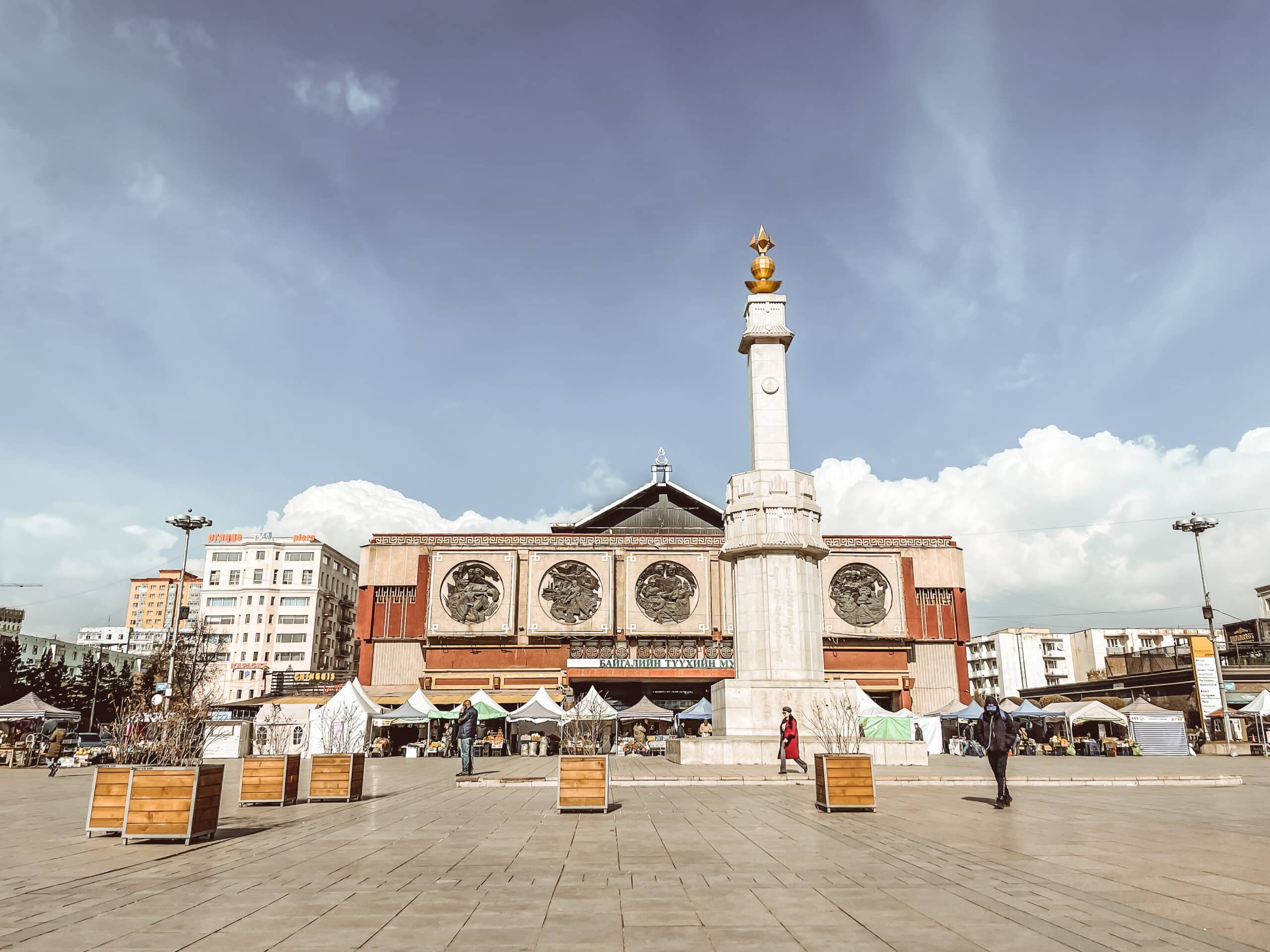
The Fine Arts Zanabazar Museum
The Fine Arts Zanabazar Museum is one of the best museums in Ulaanbaatar for Buddhist artifacts and relics, including the elaborately decorated red coral mask of Jamsran (Begtse Dharmapala), the lord of war in Tibetan Buddhism.
The museum is also home to several of Sharav’s works, who we already mentioned is one of the most famous and important painters in recent Mongolian history.
Additionally, special exhibitions in the museum’s ground floor exhibition hall often highlight some of the best contemporary Mongolian painters who are just starting to make a name for themselves in the art world.
While adult general admission tickets only cost 8,000 tugrik, be prepared to pay 45,000 tugrik for a photography ticket, making it the most expensive museum to take photos at in town. Despite this, the museum is still worth checking out.
Can’t make it to Ulaanbaatar or didn’t have time to visit the museum during your Mongolia trip? You can also take a virtual tour of the museum and some of its most notable pieces online on the Google Arts & Culture website.

The Mongolian National Modern Art Gallery
While not a museum, the Mongolian National Modern Art Gallery is home to the best collection of artworks, including some of the most famous and well-known pieces, in Mongolia.
With more than 4,000 pieces, including paintings, sculptures, engravings, embroidery, and handicrafts from artists of all generations, walking through the galleries will leave you looking at Mongolia in a whole new light.
The gallery opens every day at 10:00 am and is located near to Sukhbaatar Square.
Choijin Lama Temple Museum
As part of the recently reconstructed and reopened Choijin Lama Temple, the Choijin Lama Temple Museum celebrates the temple as one of the few Buddhist Temples in Mongolia that survived during the years when Mongolia was a part of the Soviet Union. It was during those times when the Soviets conducted a violent purge, arresting and executing thousands of lamas across the country, and destroying more than 1,000 Buddhist temples.
The Choijin Lama Temple only survived the purge thanks to a designation as a Museum of Religious History in 1942.
Nowadays, Mongolian Buddhism is a strong part of the Mongolian identity and the Choijin Lama Temple Complex, and its collection of holy books and religious relics, are one of the most sacred and celebrated in the country.
The museum has a permanent collection as well as special exhibitions that are easy to check out, even if you’re short on time, when visiting Ulaanbaatar.
Bogd Khaan Palace Museum
One of the only other religious centers that survived Soviet times, the Bogd Khaan Palace Museum was built between 1893 and 1903 and is most famous for being the last Bogd Khaan’s Winter Palace.
The Winter Palace complex includes six temples containing Buddhist artwork, sculptures, and beautiful examples of thangka art.
What’s most interesting about visiting this museum though are the pieces from the last Bogd Khaan’s personal life, including his throne, bed, his personal collection of art, his ceremonial ger (yurt), a pair of boots gifted to him by Russian Tsar Nicholas II, and jewelry once worn by the Khaan’s pet elephant. (And no, elephants are not found in Mongolia.)
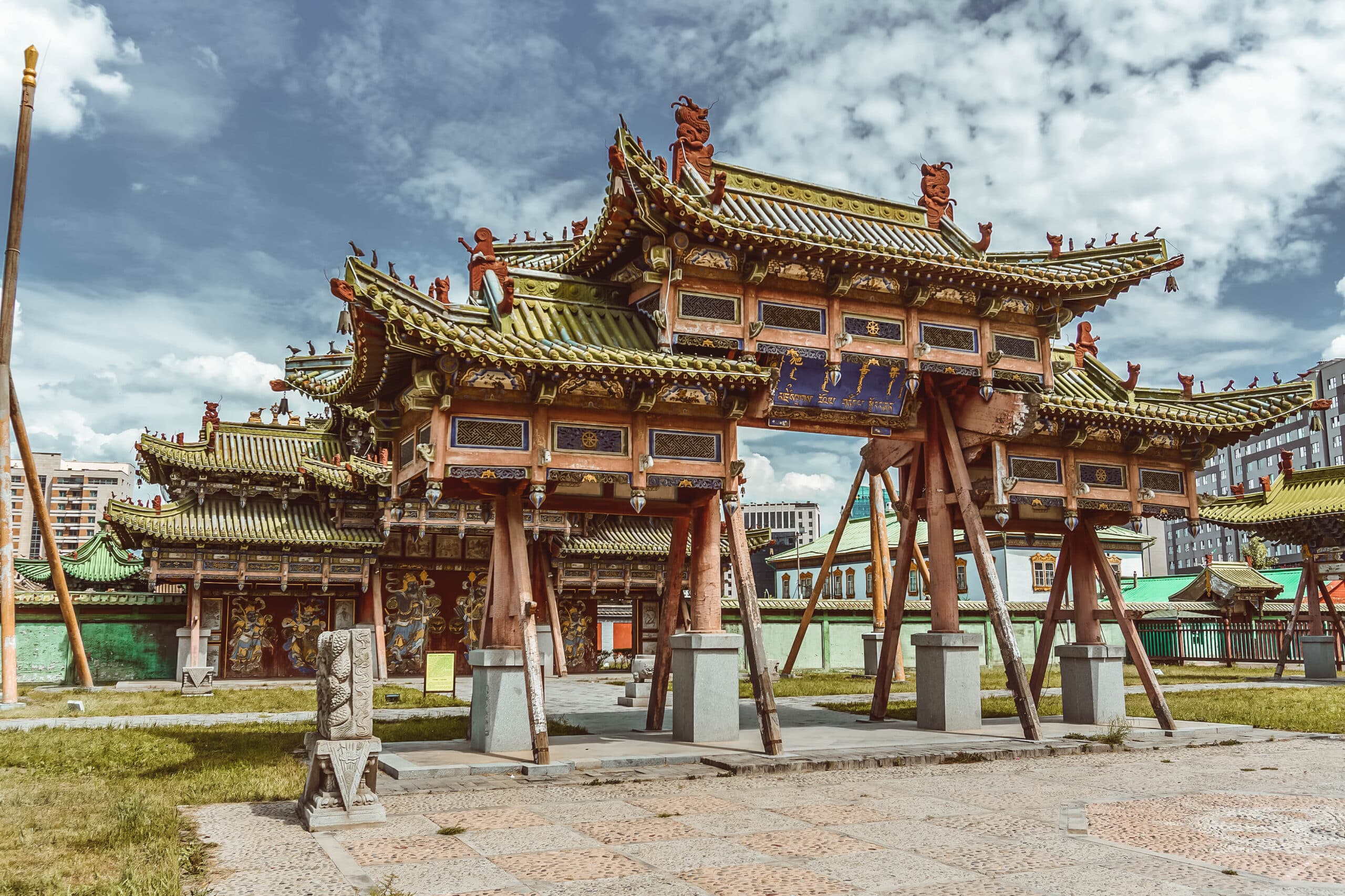
Mongolian Military Museum
The Mongolian Military Museum is one of those museums that’s a bit out of the way, but is worth making it to, if you have the time. Veterans especially will appreciate this museum.
The focus here is on the history of the struggle for freedom and independence of the Mongolian state and people, putting the country’s struggle for power and sacrifices as satellite state of the Soviet Union perspective.
With four permanent exhibition halls and more than 9,600 artifacts, including weapons, tanks, anti-aircraft guns, armored vehicles, and an MIG fighter plane, the museum covers a range of history dating back to the Bronze Age up through the 20th and 21st century.
Anyone fascinated by Soviet memorabilia and learning more about Mongolia’s role in the World Wars will appreciate visiting this museum.
Mongolian Rail Museum
Even though the Mongolian Rail Museum hasn’t reopened since the pandemic, anyone passing by this museum can easily see these retired trains from the street for free.
The open-air museum is an ode to the historic locomotives that used to make their way through the country, including three steam-powered trains and three diesel-powered locomotives.
Look for details on these trains, such as gold Stalin icons and Soviet stars, that will remind you of the country’s past.

Author: Breanna Wilson
Hi! Sain uu! I’m Breanna, an American travel writer and adventurer living in Ulaanbaatar, Mongolia for more than 5 years. I’ve written for and been featured in Condé Nast Traveler, CNN, Forbes, and the New York Times, among others. Read more of my Mongolia travel articles here.
Join my Private Travel Group on Facebook
Proudly Based in Ulaanbaatar, Mongolia
© 2024 Meanwhile in Mongolia


